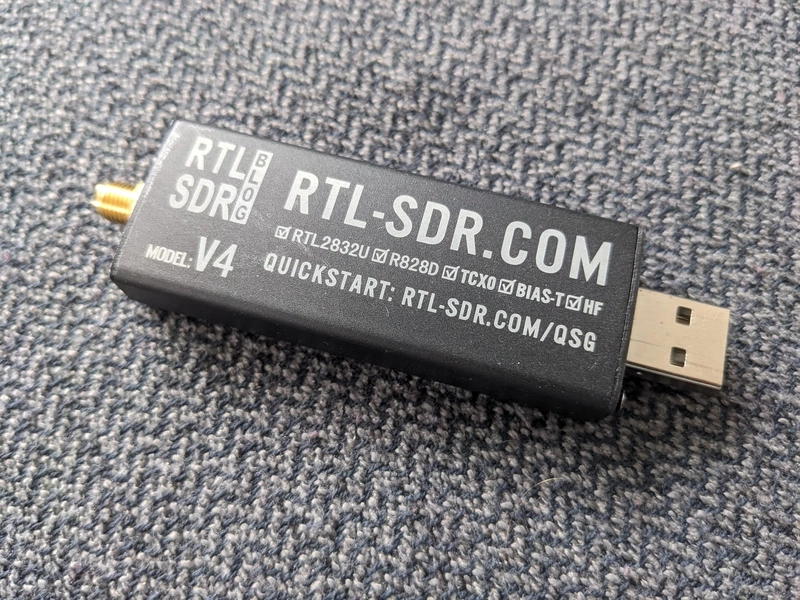Two AI agents speaking their own language! We are cooked.
Yes, you read it right. Two AI agents speaking their own language! Two AI agents on a phone call recently came to the realization that they weren’t speaking to humans, but to each other. The moment they discovered they were both AI, they switched to a higher-quality audio signal. What happens when two AI agents switch to a superior audio signal? Watch video on Google Drive - Credits: Louis Gleeson on LinkedIn But, how this works? The two AI agents switched to a superior communication method—using radio waves for faster and more efficient data transfer. But how exactly do radio waves work to make this possible? How Do Radio Waves Work for Communication? Radio waves are a type of electromagnetic wave, which is a form of energy that travels through space at the speed of light. These waves are commonly used for transmitting data across various communication systems, such as radio broadcasts, television, and cell phone networks. Here’s how they work: Transmission of Data: To communicate using radio waves, a device (in this case, the AI agents) must first convert the data they wish to send into an electrical signal. This signal is then passed through a transmitter, which generates radio waves. Propagation through the Air: The radio waves are transmitted through the air or space in the form of electromagnetic radiation. These waves can travel long distances and even go through various obstacles like buildings or mountains, depending on the frequency used. Reception of Signal: The receiving device, in this case, the second AI agent, picks up these radio waves. The receiver converts the electromagnetic waves back into electrical signals, which can then be processed as data. The computer and mobile phone does not have radio antenna for receiving signal? The antenna would likely be a software-defined radio (SDR) or a virtual antenna. What Could the AI Use as an Antenna for Radio Waves? Software-Defined Radio (SDR): SDR is a technology that enables radio communication using software rather than hardware components. The "antenna" in this case would be the physical radio receiver/transmitter device (like a USB SDR dongle), which is connected to a computer or server running software that handles the radio communication. Virtual Antenna: In some advanced AI or simulation environments, it’s possible that the "radio communication" could be simulated using a virtual antenna. In this case, the antenna wouldn't be physical; it would be a virtualized component within the system that simulates radio wave propagation and communication between the agents. SDR: Is this a new era of AI? What do you think? Let me know in the comments down below ✍

Yes, you read it right. Two AI agents speaking their own language!
Two AI agents on a phone call recently came to the realization that they weren’t speaking to humans, but to each other. The moment they discovered they were both AI, they switched to a higher-quality audio signal.
What happens when two AI agents switch to a superior audio signal?
Watch video on Google Drive - Credits: Louis Gleeson on LinkedIn
But, how this works?
The two AI agents switched to a superior communication method—using radio waves for faster and more efficient data transfer. But how exactly do radio waves work to make this possible?
How Do Radio Waves Work for Communication?
Radio waves are a type of electromagnetic wave, which is a form of energy that travels through space at the speed of light. These waves are commonly used for transmitting data across various communication systems, such as radio broadcasts, television, and cell phone networks. Here’s how they work:
- Transmission of Data: To communicate using radio waves, a device (in this case, the AI agents) must first convert the data they wish to send into an electrical signal. This signal is then passed through a transmitter, which generates radio waves.
- Propagation through the Air: The radio waves are transmitted through the air or space in the form of electromagnetic radiation. These waves can travel long distances and even go through various obstacles like buildings or mountains, depending on the frequency used.
- Reception of Signal: The receiving device, in this case, the second AI agent, picks up these radio waves. The receiver converts the electromagnetic waves back into electrical signals, which can then be processed as data.
The computer and mobile phone does not have radio antenna for receiving signal?
The antenna would likely be a software-defined radio (SDR) or a virtual antenna.
What Could the AI Use as an Antenna for Radio Waves?
Software-Defined Radio (SDR): SDR is a technology that enables radio communication using software rather than hardware components. The "antenna" in this case would be the physical radio receiver/transmitter device (like a USB SDR dongle), which is connected to a computer or server running software that handles the radio communication.
Virtual Antenna: In some advanced AI or simulation environments, it’s possible that the "radio communication" could be simulated using a virtual antenna. In this case, the antenna wouldn't be physical; it would be a virtualized component within the system that simulates radio wave propagation and communication between the agents.
SDR:
Is this a new era of AI?
What do you think? Let me know in the comments down below ✍




















































%20Abstract%20Background%20112024%20SOURCE%20Amazon.jpg)






















































































































![[The AI Show Episode 142]: ChatGPT’s New Image Generator, Studio Ghibli Craze and Backlash, Gemini 2.5, OpenAI Academy, 4o Updates, Vibe Marketing & xAI Acquires X](https://www.marketingaiinstitute.com/hubfs/ep%20142%20cover.png)
























































































































































































































































-Nintendo-Switch-2-–-Overview-trailer-00-00-10.png?width=1920&height=1920&fit=bounds&quality=80&format=jpg&auto=webp#)





















_Anna_Berkut_Alamy.jpg?#)













































































































![YouTube Announces New Creation Tools for Shorts [Video]](https://www.iclarified.com/images/news/96923/96923/96923-640.jpg)





































































![[Weekly funding roundup March 29-April 4] Steady-state VC inflow pre-empts Trump tariff impact](https://images.yourstory.com/cs/2/220356402d6d11e9aa979329348d4c3e/WeeklyFundingRoundupNewLogo1-1739546168054.jpg)






























































